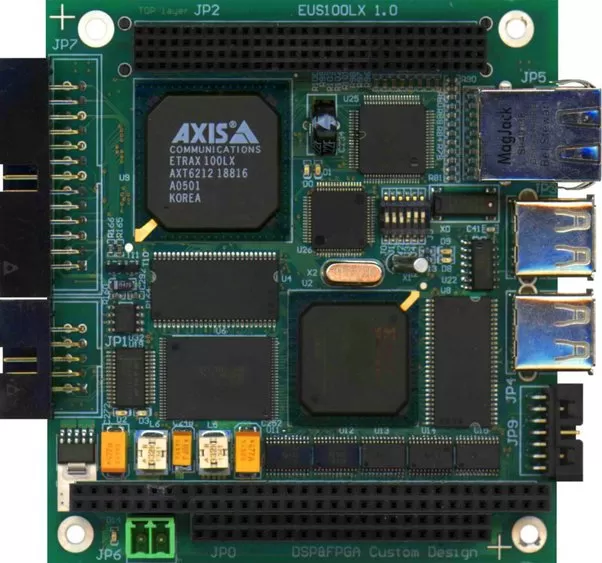Used Controller Unit or Refurbished Controller Unit of Dell, DellEqualogic, EMC, Hitachi, NetApp, HP, IBM, and SUN in UAE.
What is Control Unit?
The control unit is a component of the central processing unit (CPU) of a computer that manages the execution of instructions by directing the flow of data between the CPU and other components of the computer. It is responsible for fetching instructions from memory, decoding them, and executing them in the correct sequence.
The control unit works in conjunction with the arithmetic logic unit (ALU) of the CPU to perform the necessary calculations and logical operations required by the instructions. The control unit also coordinates the movement of data between the CPU and other components, such as input/output devices and memory.
Overall, the control unit plays a critical role in the operation of a computer by ensuring that the correct instructions are executed in the correct sequence and that the necessary data is moved efficiently between the various components of the system.
Types of Control Units
There are two main types of control units: hardwired control units and microprogrammed control units.
Hardwired Control Unit (HCU):
A hardwired control unit uses a fixed set of logic circuits to control the execution of instructions. These circuits are designed to perform specific operations based on the opcode of the instruction being executed. Hardwired control units are faster than microprogrammed control units but are less flexible because their behavior is fixed and cannot be changed easily.
Microprogrammed Control Unit (MCU):
A microprogrammed control unit uses a microcode to control the execution of instructions. Microcode is a set of instructions that are stored in memory and can be changed or updated easily. The microcode provides a more flexible way to control the behavior of the CPU and allows for easier debugging and modification. However, microprogrammed control units are slower than hardwired control units because they require additional memory and processing time to access and execute the microcode.
Both types of control units have their own advantages and disadvantages, and their choice depends on the specific requirements of the computer system being designed.
Controller Unit Models
| Model | Parts No |
| YHX-A10 | KEK-M5800-0A |
| YHX-A30 | KEK-M5800-1A |
| YHX-CN-STOEN | KEK-M5869-00 |
| YHX-AMP-FU | KEK-M6195-00 |
| YHX-AMP-BATT | KEK-M53G0-00 |
| YHX-AMP-BU | KEK-M5317-00 |
Advantages of a well-designed Control Unit:
A well-designed control unit in a computer system can provide several advantages, including:
Efficient execution of instructions:
The control unit ensures that the instructions are executed in the correct sequence and that the necessary data is moved efficiently between the CPU and other components, resulting in faster and more efficient execution of instructions.
Flexibility:
A well-designed control unit can be programmed to handle different instruction sets and architectures, making it more adaptable to varying types of computer systems.
Improved system reliability:
The control unit helps to ensure the correct operation of the CPU and other components of the computer system, reducing the likelihood of errors or system crashes.
Reduced cost:
A well-designed control unit can help reduce the price of a computer system by reducing the number of components required and increasing the efficiency of system operation.
Easier debugging and testing:
A well-designed control unit provides a clear and structured control flow for the execution of instructions, making it easier to debug and test the system.
Overall, a well-designed control unit is essential for the efficient and reliable operation of a computer system and can provide numerous benefits in terms of performance, flexibility, and cost-effectiveness.
Disadvantages of a poorly-designed Control Unit:
A poorly-designed control unit in a computer system can have several disadvantages, including:
Slow performance:
A poorly-designed control unit may result in slow performance, as instructions may not be executed efficiently or in the correct sequence.
System crashes:
A poorly-designed control unit can cause system crashes or errors, as it may fail to correctly coordinate the flow of data between the CPU and other components.
Limited flexibility:
A poorly-designed control unit may be limited in its ability to handle different instruction sets or architectures, making it less adaptable to different types of computer systems.
High cost:
A poorly-designed control unit may require additional components or processing power to compensate for its inefficiencies, leading to increased costs for the computer system.
Difficult debugging and testing:
A poorly-designed control unit can make debugging and testing more difficult, as the control flow may be unclear or inconsistent.
Overall, a poorly-designed control unit can significantly impact the performance, reliability, and cost-effectiveness of a computer system, and can make it more difficult to develop, debug, and maintain.
The controller unit is a component of the CPU that manages the execution of instructions by directing the flow of data between the CPU and other components of the computer. It fetches instructions from memory, decodes them, and executes them in the correct sequence.
In Computer System Architecture (CSA), the control unit is a component of the CPU that manages the execution of instructions by directing the flow of data between the CPU and other components of the computer. It fetches instructions from memory, decodes them, and executes them in the correct sequence. The control unit in CSA is responsible for coordinating the operation of all other CPU components, including the arithmetic logic unit (ALU) and memory.
Hardwired control units are generally faster than microprogrammed control units because they use fixed logic circuits to control the execution of instructions, whereas microprogrammed control units use microcode to perform the same function, which requires additional memory and processing time. However, microprogrammed control units are more flexible and easier to modify than hardwired control units.













